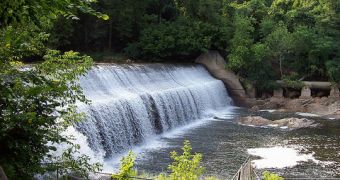The Patapsco River, which stands at the core of Maryland's Patapsco State Park, was dammed back in 1907. However, it seems that state officials are now considering ways of removing the dam and allowing the water to run freely.
Apparently, the main drive behind this decision is represented by their becoming aware of how this artificial barrier in the river's natural pathways negatively impacts on the wellbeing of surrounding natural ecosystems.
Maryland's Department of Natural Resources argues that, once the dam is removed, the natural migratory routes for local species of fish will no longer be obstructed.
To be more precise: about 64 miles of spawning habitat will be restored to rightful “owners.”
As well as this, local people and tourists will be able to use the river for recreational activities such as canoeing.
For the time being, it seems that the only complaints that can be raised against tearing down the dam have to do with the fact that this construction can be regarded as being part and parcel of local industrial history.
Baltimore Sun informs us that, at the beginning of the 20th century, the Bloede Dam, together with three other similar constructions, was responsible for providing nearby communities with the energy they needed to carry on with their daily routines.
However, its glory days are now long gone and there is no reason to sacrifice environmental protection for the sake of the dam's having historical significance.
Preliminary calculations indicate that costs for bringing down the dam will most likely amount to $1,1 million (roughly €0,9 million).
Presently, state officials are debating on which method to use when implementing this project, as they wish to disturb the river as little as possible.
Their main concern is making sure that whatever sediments the dam has caused to build up in the waters will not be stirred up, as this might have negative effects both on public safety, and on the creatures living in the river.

 14 DAY TRIAL //
14 DAY TRIAL //